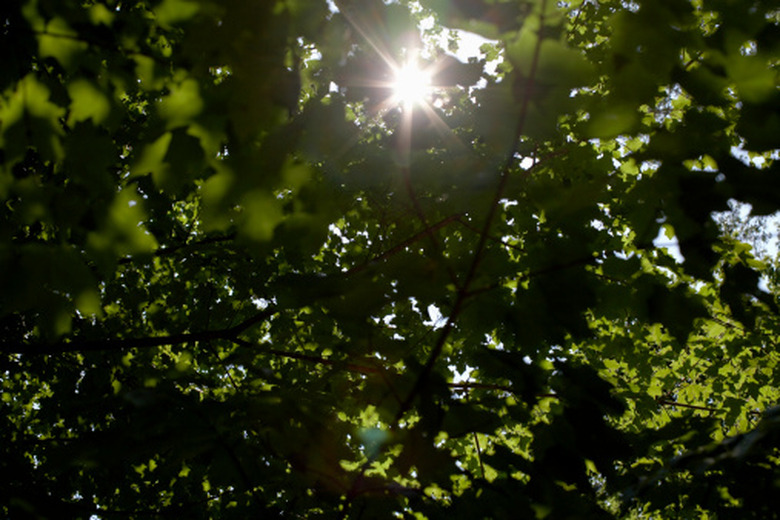Maple Tree Diseases And Peeling Bark
Maple trees experiencing peeling bark may have contracted a fungal disease called verticillium wilt, according to the University of Minnesota. It is important for gardeners to identify the signs of verticillium wilt, because the disease mimics some of the same symptoms of herbicide or mechanical injuries. Because fungicides cannot cure your maple tree, you must provide proper cultural control methods.
Verticillium Wilt
Verticillium wilt is a fungus that lives indefinitely in the soil. Fungal spores enter maple trees through wounds on branches, trunks or roots. Once fungal spores enter the maple tree, they produce toxins that invade the water connecting tissues. These toxins move through the plant through the growing fungal spores. Maple trees try to close off the toxins, which results in blocking water from transporting through the plant.
- Maple trees experiencing peeling bark may have contracted a fungal disease called verticillium wilt, according to the University of Minnesota.
- Once fungal spores enter the maple tree, they produce toxins that invade the water connecting tissues.
Symptoms
Gardeners may see their maple trees suffer from verticillium wilt anytime during the growing season. However, symptoms are more likely to occur during July and August. In addition to bark peeling, maple trees may develop yellow foliage, leaf scorch, stunted growth, branch dieback, dying bark and bark discoloration. The maple may suffer an overall health decline from the disease and lack of water. Left untreated, maple trees can die.
Pruning
Pruning off dead and weak branches may restore the maple's health. However, pruning will not remove the fungus from the tree, but it does help to prevent other fungal diseases from killing the maple. Sterilize your pruning tools with 30 percent water and 70 percent denatured alcohol before pruning and in between cuts. Pruning tools can easily spread harmful pathogens over the tree. Remove maple branches near the branch collar. The branch collar is the swelling that attaches the branch to the main trunk. Within the branch collar, there are chemicals that prevent harmful pathogens from entering the trunk.
- Gardeners may see their maple trees suffer from verticillium wilt anytime during the growing season.
- However, pruning will not remove the fungus from the tree, but it does help to prevent other fungal diseases from killing the maple.
Watering and Fertilizing
Maple trees infected with verticillium wilt need water. Water your maple trees regularly throughout the growing season. To water your maple tree, make sure that you apply water every 10 to 14 days underneath the drip line of the tree. The drip line is the area that is directly underneath the outermost branches. Furthermore, fertilize your tree with a balanced fertilizer that will not stress the tree. You can use a fertilizer that has an NPK amount of 10-10-10.
